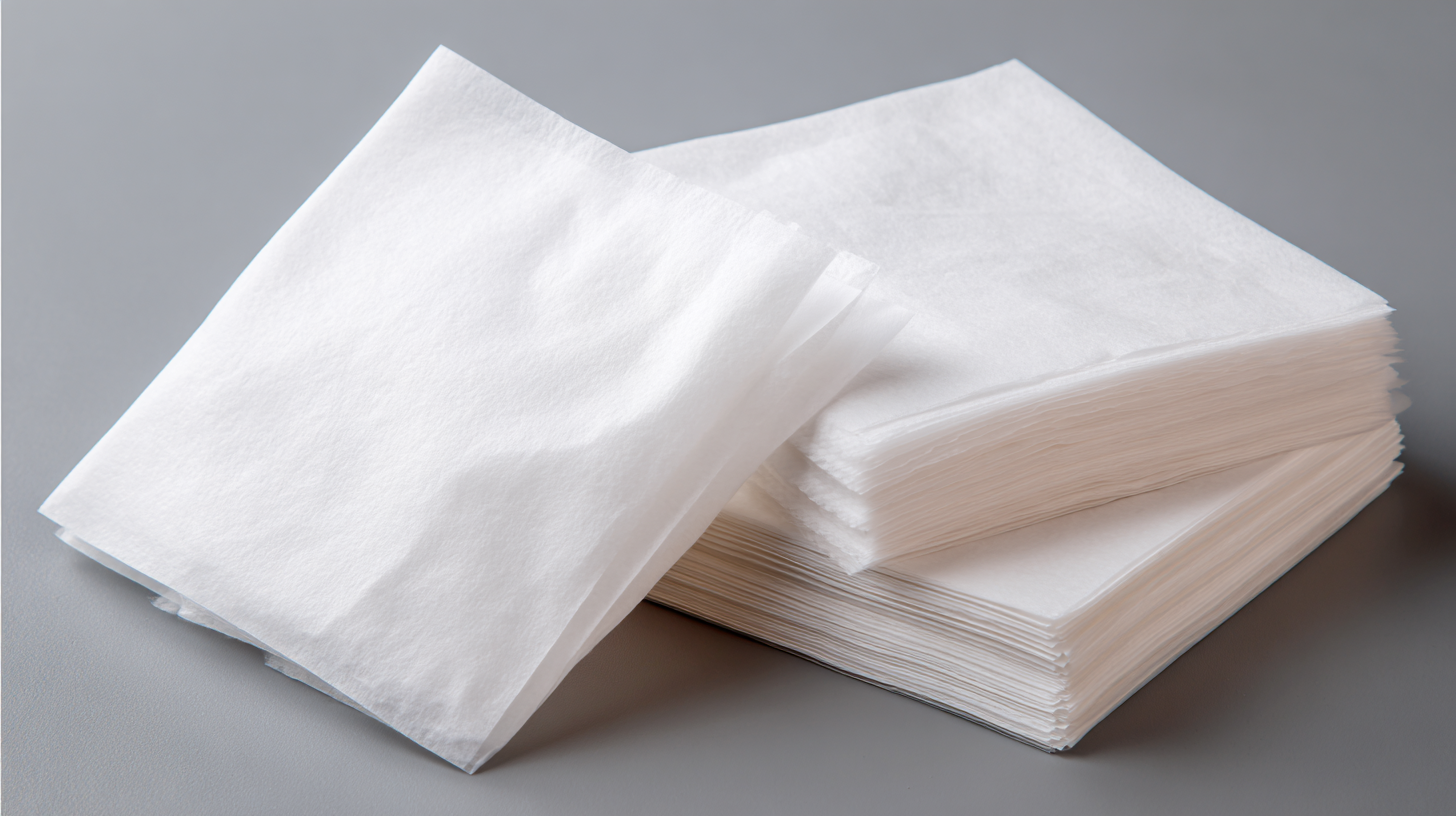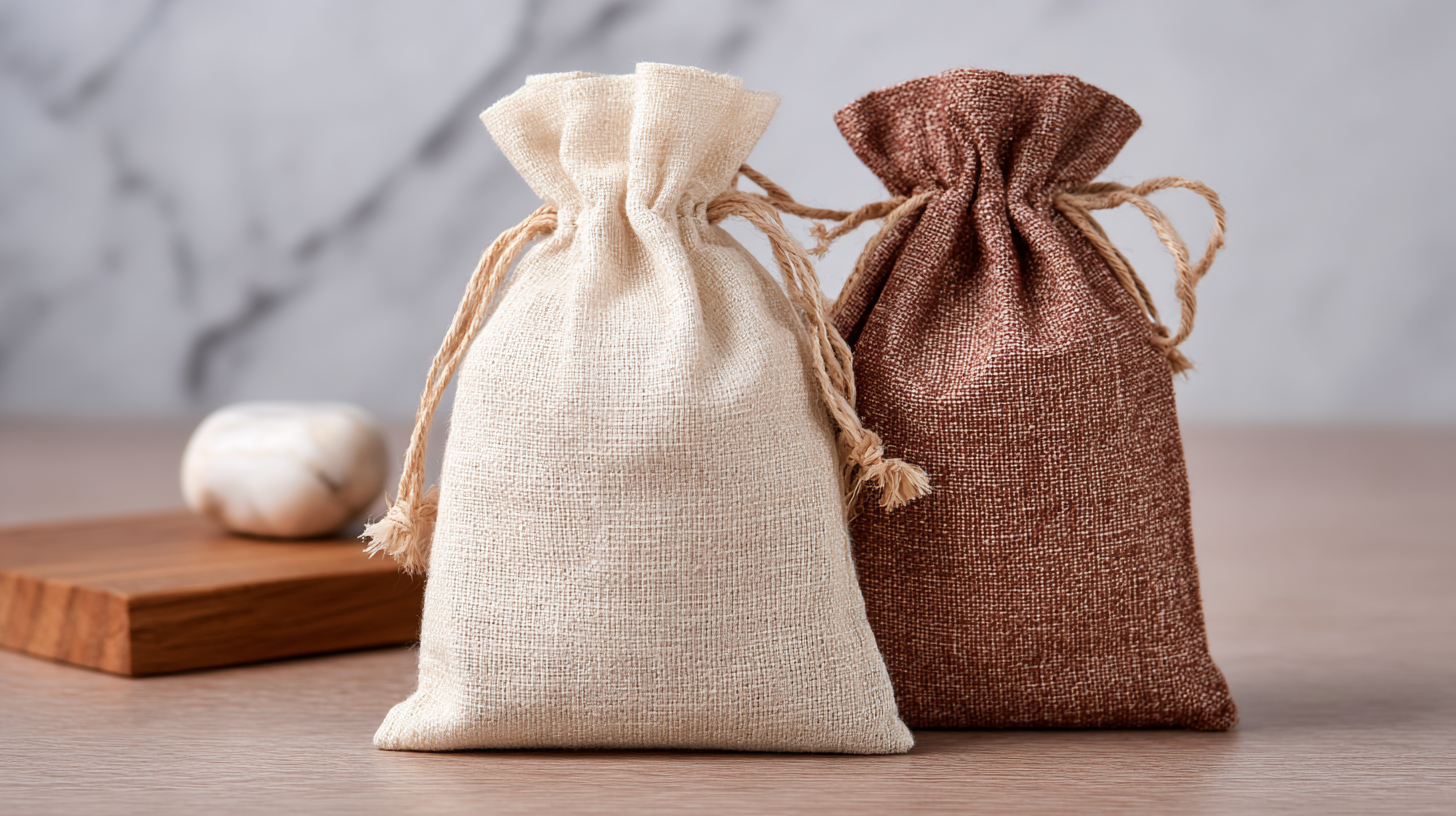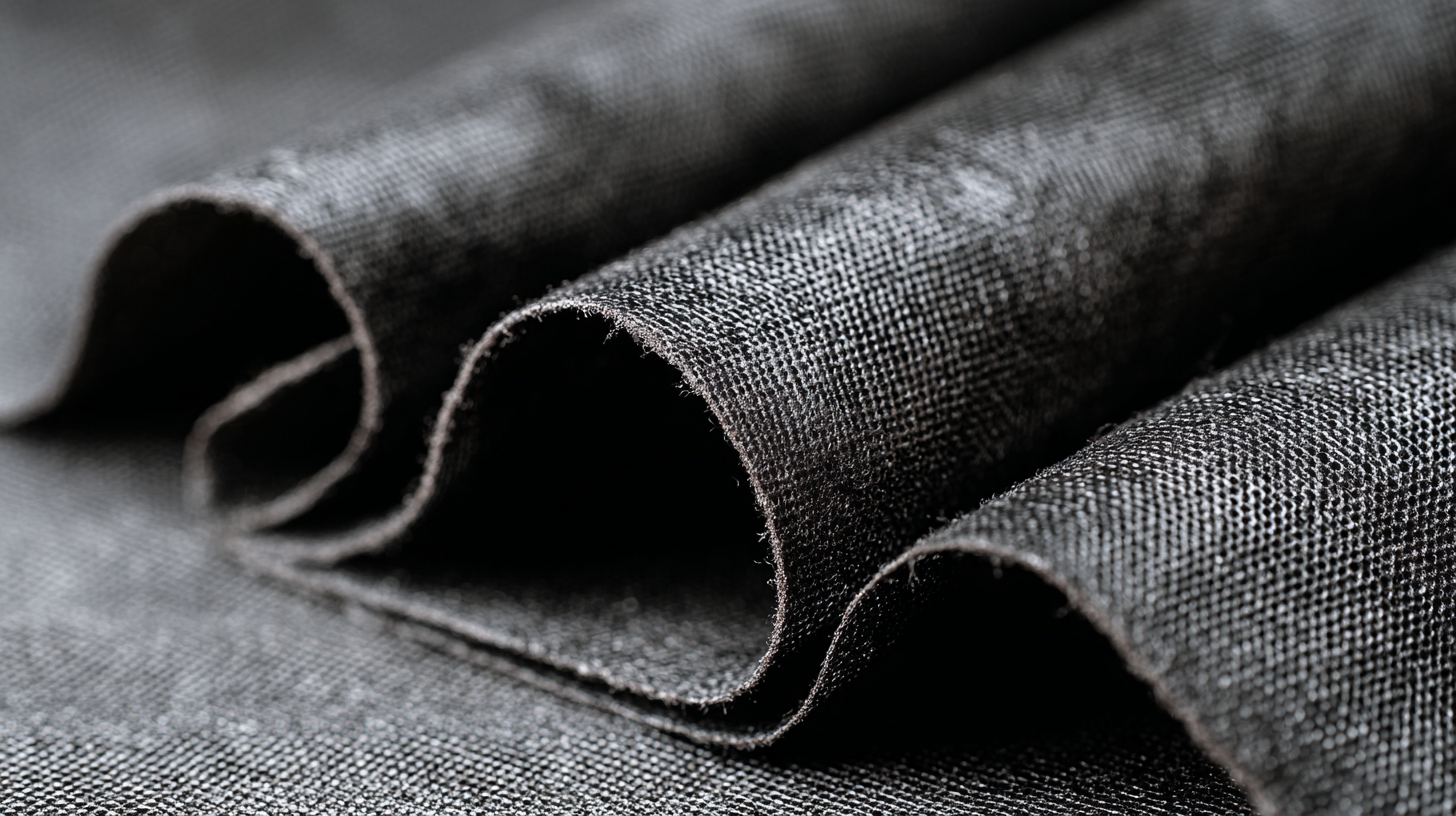
Leave Your Message
-
 CONTACT WhatsApp
CONTACT WhatsApp -

-

-
 CONTACT NUMBER
CONTACT NUMBER -
 CONTACT EMAIL
CONTACT EMAIL





In recent years, the demand for sustainable and versatile packaging solutions has surged, with nonwoven fabric pouches emerging as a popular choice across various industries. According to a report by Smithers Pira, the global nonwoven fabric market is expected to reach $50 billion by 2025, driven by increasing consumer preference for eco-friendly products. These nonwoven fabric pouches offer numerous advantages, including breathability, durability, and the ability to be customized for different applications, making them ideal for packaging goods in sectors such as fashion, food, and personal care. As businesses strive to reduce their carbon footprint and enhance their brand appeal, understanding the characteristics and benefits of nonwoven fabric pouches becomes essential for leveraging this innovative material in packaging strategies.

Nonwoven fabric pouches have gained popularity across various industries due to their unique characteristics and numerous benefits. These pouches are crafted from synthetic fibers, which are bonded together through chemical, mechanical, or thermal processes, creating a durable yet lightweight material. The standout feature of nonwoven fabric is its versatility; it can be designed in various textures and thicknesses to suit specific needs. Moreover, these pouches are often breathable, water-resistant, and recyclable, making them an eco-friendly option for packaging and storage solutions.
When considering nonwoven fabric pouches, it’s essential to keep a few tips in mind. Firstly, assess the purpose of the pouch—whether for retail, promotional, or personal use—as this will guide your selection of material and design. Secondly, prioritize the quality of the fabric; higher-quality nonwoven materials will enhance the durability and appearance of your pouches. Lastly, explore customization options; many manufacturers offer printing and branding services, allowing you to create pouches that not only meet practical requirements but also reflect your brand identity effectively.
The market for nonwoven fabric pouches is witnessing a significant surge as businesses and consumers alike are becoming more conscious of sustainability. Nonwoven pouches, made from materials like polypropylene and polyester, offer an eco-friendly alternative to traditional packaging. These pouches are not only recyclable but also lightweight and durable, appealing to companies aiming to reduce their environmental footprint. As customers increasingly prioritize sustainable options when making purchasing decisions, manufacturers are responding by innovating with nonwoven materials.
**Tips for Choosing Nonwoven Pouches:**
When selecting nonwoven pouches for packaging, consider the materials' recyclability and durability. Look for options that are made from post-consumer recycled materials to enhance sustainability. Additionally, consider the design and functionality of the pouches. Opt for custom sizes and prints that reflect your brand’s values while catering to your product’s needs.
The increasing demand for nonwoven fabric pouches is also fueled by various industries, from retail to food and beverage. Companies are recognizing the potential for nonwoven pouches to not only serve as effective packaging solutions but also as a means to enhance brand image through eco-friendly practices. Adapting to these trends will not only bolster your market presence but also contribute to a more sustainable future.
When evaluating nonwoven fabric pouches against traditional fabric options, several factors come into play, notably cost and performance. According to a report by Smithers Pira, the nonwoven fabric market is projected to reach $50 billion by 2025, driven by its lightweight yet durable properties. Nonwoven pouches can be manufactured at a lower cost due to the simpler production processes involved, which involves bonding fibers through heat, chemicals, or pressure, rather than weaving or knitting. This reduction in manufacturing complexity translates directly to cost savings, making nonwoven options attractive for bulk production.

In terms of performance, nonwoven fabric pouches offer several advantages. They are typically more resistant to moisture and have better filtration properties than their traditional counterparts, as highlighted in a study by the Nonwoven Innovation & Research Institute. Additionally, nonwoven fabrics are often made from recyclable or biodegradable materials, appealing to environmentally conscious consumers. This combination of performance benefits and cost efficiency positions nonwoven fabric pouches as a competitive alternative to traditional fabric options, making them an increasingly popular choice across various industries.
Innovations in technology have revolutionized the production processes of nonwoven fabric, leading to enhanced efficiency and improved product quality. The introduction of advanced machinery and automation systems has significantly streamlined manufacturing, allowing for faster production rates while reducing waste. These technological advancements have fostered the ability to create nonwoven pouches that are not only durable but also environmentally friendly, catering to the increasing demand for sustainable packaging solutions.

Furthermore, the development of new fiber technologies has expanded the range of materials available for nonwoven fabrics. Manufacturers are now able to experiment with various fiber compositions, resulting in pouches that possess unique properties such as increased breathability, water resistance, or improved tensile strength. This innovation not only enhances the functionality of nonwoven pouches but also allows businesses to customize their products to better meet specific consumer needs, making nonwoven fabrics a versatile choice in multiple industries.
The environmental footprint of consumer goods packaging is under significant scrutiny, and nonwoven fabric pouches are emerging as an innovative solution. These pouches are crafted from synthetic fibers, making them highly versatile and lightweight while offering a greener alternative to conventional packaging materials. As the food packaging sector seeks sustainable solutions, nonwovens prove to be an attractive option due to their reusability and recyclability. By incorporating nonwoven fabrics, brands can align with growing consumer demand for environmentally friendly products, helping to reduce overall waste and minimize adverse environmental impacts.
Valuable data highlights that the global luxury packaging market is expected to grow from USD 23.64 billion in 2025 to USD 34.93 billion by 2033, demonstrating a CAGR of 5%. This growth signifies a shift in consumer preferences towards sustainable luxury offerings, further amplifying the need for innovative materials such as nonwoven pouches. Moreover, with millions of tons of clothing discarded each year, the valorization of textile waste into nonwoven structures signifies a critical advancement in sustainability metrics. The emphasis on recycling, particularly of post-consumer PET bottles, contributes significantly to reducing landfill waste and underscores the importance of adopting nonwoven solutions in various market segments and applications.
| Dimension | Value |
|---|---|
| Material Type | Polypropylene (PP) |
| Biodegradability | Up to 90% within 6 months |
| Recyclability | Yes, can be recycled into new products |
| Carbon Footprint | Lower than traditional plastic pouches |
| Average Weight | 10-50 grams |
| Water Usage in Production | 50% less than traditional fabrics |
| Applications | Food packaging, retail bags, hygiene products |






